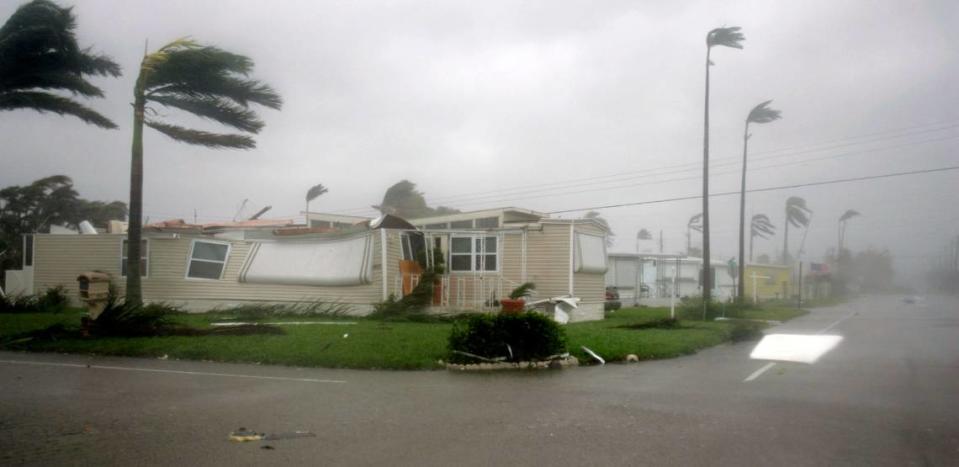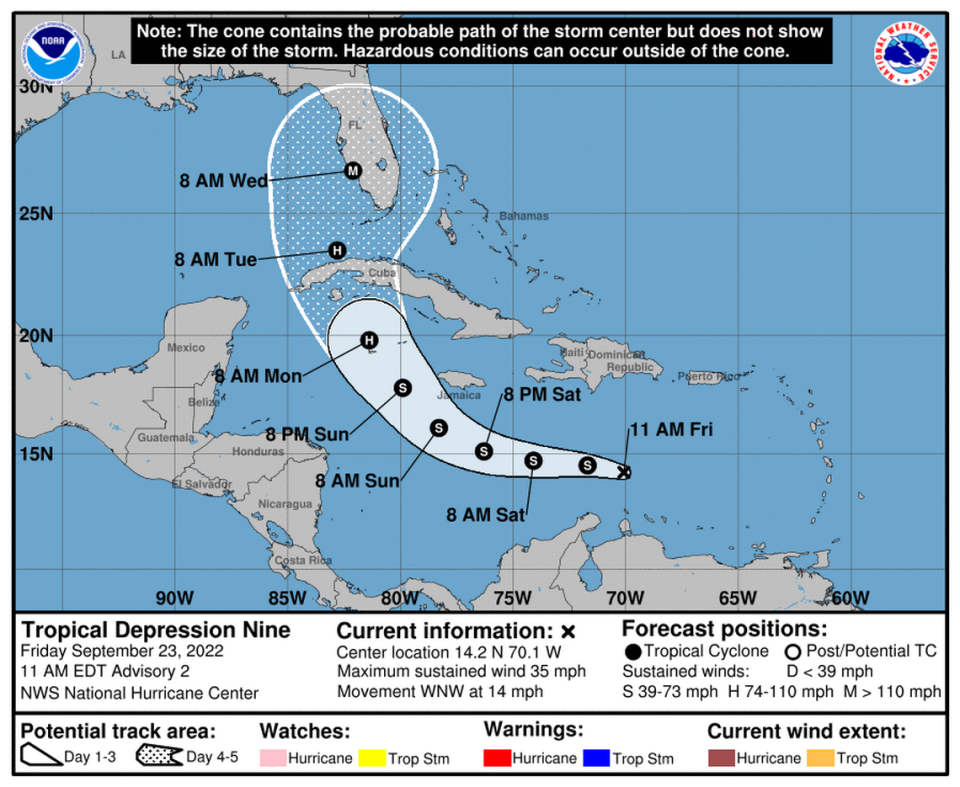How bad would a Category 3 hurricane be in Florida? Here’s what a major storm can do
Any hurricane can leave unexpected wreckage behind, but there are levels to just how strong a storm can be.
As meteorologists continue monitoring Ian, they expect it to become a major hurricane before making landfall in Florida early next week.
The possible Category 3 storm could bring “devastating damage,” according to the National Hurricane Center. Here are some of the threats that the hurricane could pose in Florida.
Strong wind speeds
Hurricanes are ranked on a scale from Category 1 to Category 5, with five being the strongest storm possible. A Category 3 storm qualifies as a “major” hurricane with sustained wind speeds between 111 and 129 mph.
Weather experts say a Category 3 hurricane’s wind force brings a “high risk of injury or death” due to the amount of debris falling and flying through the air.
The wind and the flying debris from a Category 3 storm could destroy “nearly all” mobile homes, especially ones built before 1994. According to the National Weather Service, traditional homes could also see major damage from winds that are strong enough to remove roof decking.
In a video prepared by the Weather Channel, meteorologist Mark Elliot explained that Category 3 hurricane winds can be strong enough to blow in the door of a building or rip the siding from a house.
Knocked down trees
Trees are also likely to be uprooted or snapped, causing roadblocks. A downpour of heavy rain can also make roads difficult to navigate.
Falling trees can also knock down power lines, leading to extended power outages while utility workers wait for conditions to improve before sending crews out to begin repairs.
Deadly storm surge flooding
The most dangerous part of any hurricane is the heavy flooding caused by water pushed onshore by an incoming storm, which is known as storm surge. Nearly half of all hurricane-related deaths can be attributed to storm surge, NHC officials say.
“With much of the United States’ densely populated Atlantic and Gulf Coast coastlines less than 10 feet above mean sea level, the danger from storm surges is tremendous,” the National Oceanic and Atmospheric Administration wrote in a hurricane guide.
What were other Category 3 hurricanes?
Hurricane Wilma, which the NHC describes as “massive and powerful,” made landfall as a Category 3 hurricane in South Florida in 2005, causing an estimated $16.9 billion in widespread damages. The storm caused 10 tornadoes and killed 5 people in Florida.

The year before, Hurricane Jeanne made landfall near Palm Beach and was one of the deadliest Atlantic hurricanes with over 3,000 killed in Haiti, 8 in Puerto Rico and 5 in the continental U.S. Total property damage in the U.S. was $7.5 billion.
How can you prepare?
But a hurricane’s category never tells the full story. Due to various factors, such as size, speed and direction, weather experts say every storm is different.
“Each tropical system can bring a variety of unique, life-threatening hazards to a given location,” NOAA warns. “Even if you’ve previously survived a storm in your area, future hurricanes may bring different hazards.”
The most important thing you can do to prepare for a storm is follow local updates and begin preparing a hurricane plan as soon as possible. While the latest storm approaches, experts say there is still time to gather supplies and get ready.
“It is important that you take this threat seriously and begin to execute your hurricane plan in a calm and orderly fashion while there’s still time to get ready. Don’t panic. There’s still a lot of time,” Acting NHC Director Jamie Rhome said Friday. “Just move through your hurricane plan slowly and calmly.”


